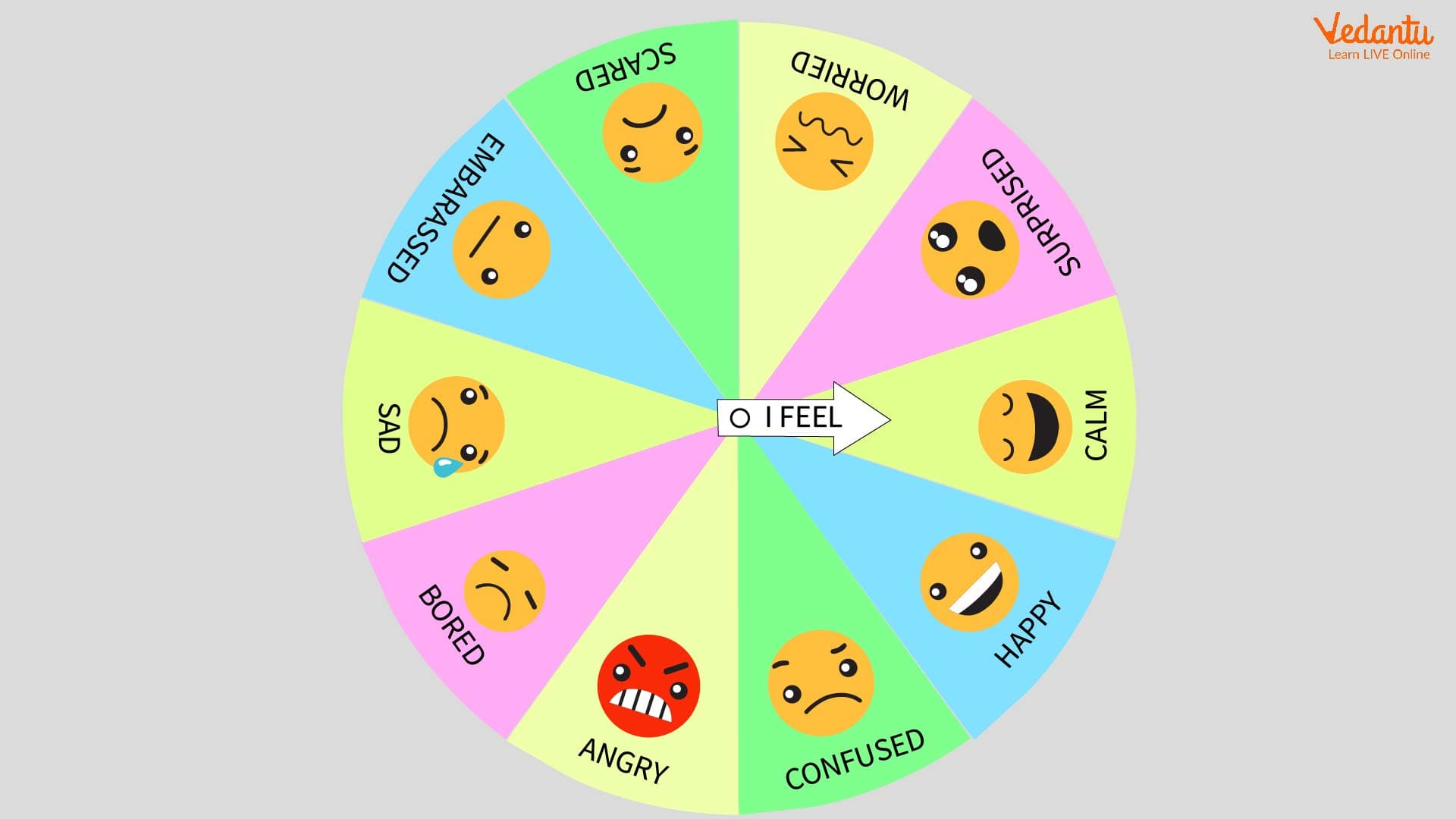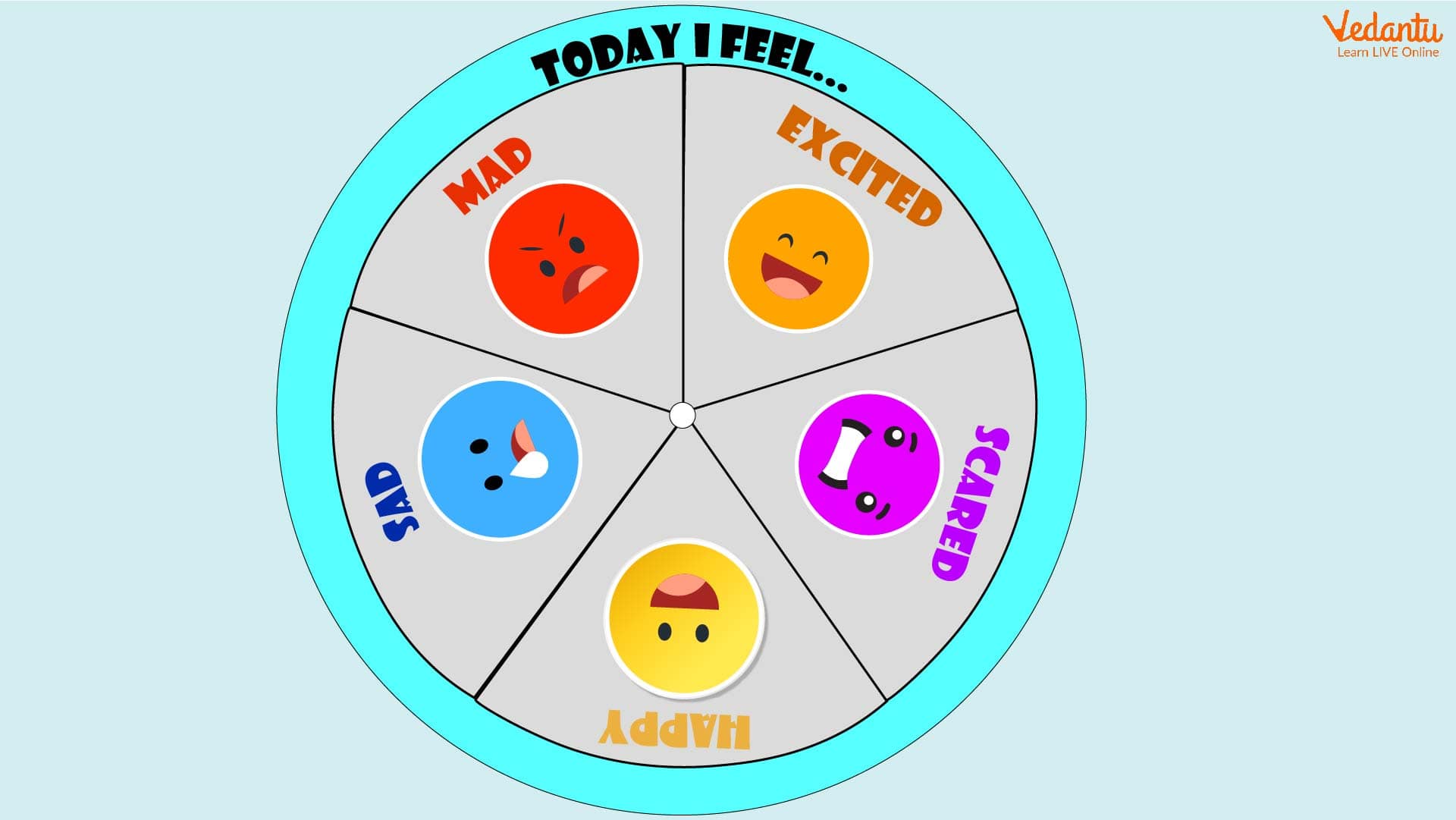How to Use Emotion Wheels for Kids?
An emotion wheel is for children who find it difficult to express their feelings, especially the major ones. Robert Plutchik, a psychologist, designed the original emotion wheel tool. It features 6 primary emotions that are further divided into other sub-categories. An emotion wheel for children has 10 emotions with no sub-category.
There is a normal range or scale of emotions that all humans get to experience as they go through different situations and phases in life. Having a medium to show their feelings makes the children confident about expressing their emotions. The possible usage of an emotion wheel is endless. It is most helpful when children find it hard to describe what's going on in their minds.
Six-Core Emotions
The 6 core emotions are- happiness, fear, sadness, disgust, surprise, and anger. Each emotion is represented with a different colour. According to Plutchik's theory, basic emotions lead to even more shades of human emotions when they mix. For instance, joy and trust can be combined to create the feeling of love. People have found experiencing these emotions along a gradient. Let's discuss this further.
1. Happiness: Happiness is the emotion we all strive for the most. It is often a pleasant emotional state characterized by joy, contentment, satisfaction, gratification, well-being, and so on. Positive psychology (a branch of human psychology) has researched happiness. It is associated with-
Facial expressions like a smile or laughter
Body language like a relaxed stance
Voice tone like a pleasant way of talking
Happiness is a primary emotion. Children mostly stay happy and away from the complications of adult life. However, the cause or reason for happiness is majorly influenced by the individual culture someone hails from. The reality of what contributes to happiness is often more complex. Happiness has its part to play in our physical & mental health.

Wheel of Emotion
2. Fear: Fear is a dynamic emotion that can influence children's sense of survival. Adults are no exception when they experience fear. It comes from threats to mental peace, doubts, and the risk of potential danger. The emotion of fear is known as a flight response. When your child experiences fear, their muscles tense, and pulse rate and respiration increase. Under such circumstances, one either tries to run from the danger or face and fight the issue. Fear is associated with emotions like-
A facial expression like wide eyes and an open mouth.
Body language is like shaken limbs and an attempt to run away from the cause of fear.
Reactions like faster breathing and heartbeat.
Children of different experiences fear for various reasons. It is an immediate response to instant threats. Besides, fear comes from a pattern of thought people develop against their peace of mind.
3. Sadness: Sadness is a common emotion that comes from disappointment, grief, lack of interest, and hopelessness. From time to time, all people (including children) experience sadness. A prolonged period of sadness can cause depression. This emotion is negative, but you can't be strong in life without it. Sadness includes expressions like:
Lethargy
Crying
Dampened mood
A feeling of quitting things
Withdrawal from all other matters
Kids, too, can go through sadness. An emotional wheel will stand for their emotion like sorrow. It is pretty essential to share their sadness. The negative feelings tend to fade away as those are shared. On the contrary, happiness increases with sharing.
4. Disgust: Disgust is another emotion children experience when something they don't like happens. They tend to feel very unpleasant and don't like doing things willingly. Disgust can be identified with emotions like-
Body language like turning away from something that feels disgusting
Physical reactions like vomiting, not feeling like eating food, retching
Facial expressions like wrinkling nose and crimp upper lip
Disgust comes from several experiences like the annoying taste, smell, or sight. As per research, these emotions evolved as poor mental and physical health.
5. Anger: Anger is another intense emotion. It can be characterized by feelings of agitation, hostility, and frustration towards others. It has to do with one's behaviour and reaction to people and incidents. When a child (or an adult) is angry, you can notice the below expression in them.
A facial expression like frowning and glaring
Hasty body language while doing things roughly
Changed voice tone like speaking loudly
A physiological reaction like sweating and turning red
Anger is a negative emotion but often clarifies hidden sadness and inner grief. Anger becomes a problem when it is excessive. With a wheel of emotions, children can learn anger management.
Emotion Wheel for Kids
How to Use Emotion Wheel for Kids
Identifying and articulating emotions is an essential component of emotional intelligence. Pick a wheel designed to describe and verbalize different shades of emotion. Besides, that understands the connection between the intensity of feelings. An emotion wheel for kids is much about it.
Kids can use the emotion wheel to connect and identify emotions. Thus they identify their feelings and come to terms with how they feel, make conscious decisions, seek solutions, get closure and become more confident and stable in all aspects.
Emotion Wheel in Life, Work, and Beyond That
While creating the emotion wheel, Plutchick noted that all animals (including humans) exhibit a range of emotions. Feelings are a complex process, and we come to terms with our reactions. Feelings can sometimes be overwhelming. A kids emotions wheel chart gives them explanations. It enables them to explore why they feel a specific emotion and how they manifest those sentiments.
Conclusion
Follow tips for using the emotional wheel for most benefits. We hope you find the blog informative. If so, share it with your friends who have children or who are teachers at some institution. It might help some more children and become a voice for all their untold emotions.








